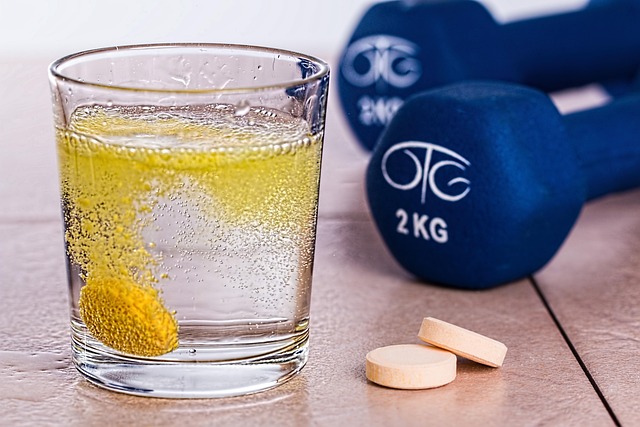Joint-Friendly Resistance Methods for Sustained Strength
Sustaining strength without overloading joints requires a balanced approach that blends smart resistance training, mobility work, and targeted recovery strategies. This article outlines practical methods—rooted in exercise selection, programming, and supportive lifestyle habits—to help you build durable strength while protecting joint health.

Maintaining strength over the long term means training in ways that support joints as well as muscles. Joint-friendly resistance methods reduce compressive and shear forces, emphasize controlled movement quality, and integrate mobility and recovery practices to limit wear and tear. By combining progressive resistance, modified loading patterns, and lifestyle supports such as nutrition, hydration, sleep, and targeted therapeutic modalities, you can improve functional strength while preserving joint integrity and resilience.
How does mobility training protect joints?
Mobility work improves range of motion, distributes loads across joints more evenly, and reduces compensatory movement patterns that stress specific tissues. Incorporate dynamic warm-ups, controlled-articular-rotation drills, and targeted stretching before and after resistance sessions. Routine mobility practice—hip openers, thoracic rotations, ankle dorsiflexion drills—helps maintain joint surfaces that track properly during squats, lunges, and presses. When combined with strength work, mobility reduces the risk of painful deviations and supports sustainable progress in resistance training.
How to build joint-friendly strength?
Prioritize low-impact resistance methods like controlled tempo lifts, bands, kettlebell swings, and machine-based exercises that limit excessive shear. Use a mix of slow eccentric phases and explosive concentric work to train tissues differently without repeating high-impact patterns. Emphasize moderate loads with higher quality repetitions rather than maximal single-effort lifts every session. Progressive overload still applies—incrementally increase volume, time under tension, or range, while watching for joint pain or persistent inflammation as signals to adjust programming.
What recovery methods support joint resilience?
Recovery is essential to maintain joint health. Structured rest days, active recovery sessions, and modalities such as cryotherapy or contrast baths can help manage acute inflammation and soreness. Soft tissue work—foam rolling, targeted massage, and gentle myofascial release—can improve surrounding tissue mobility and reduce abnormal loading. Breathwork and relaxation techniques lower systemic stress hormones that can exacerbate joint sensitivity. Consistent recovery habits allow connective tissues time to adapt and become more resilient to training demands.
Which nutrients support joint health and resilience?
Nutrition influences tissue repair and chronic joint health. Adequate protein supports collagen synthesis and muscle repair, while omega-3 fatty acids help moderate inflammation. Antioxidants from fruits, vegetables, and specific compounds such as vitamin C support connective tissue maintenance. Hydration is critical for joint cartilage function and synovial fluid viscosity—drink regularly around workouts. When dietary intake is insufficient, targeted supplementation (e.g., collagen peptides, vitamin D, omega-3) may be considered in consultation with a healthcare professional.
How do sleep and circadian rhythms affect recovery?
Sleep quality drives hormonal and tissue-repair processes essential for maintaining strength and joint health. Growth hormone release, collagen remodeling, and inflammatory regulation occur predominantly during deep sleep stages. Poor sleep or disrupted circadian rhythms can slow recovery, increase perceived joint pain, and impair performance. Prioritize consistent sleep timing, create a cool, dark sleep environment, and align training and meal timing with your circadian tendencies to enhance restorative capacity and long-term resilience.
Can pilates and breathwork improve joint outcomes?
Mindful movement systems such as pilates emphasize core stability, balanced muscular development, and controlled joint loading—qualities that transfer directly to safer resistance work. Pilates exercises teach coordinated breathing and movement patterns that reduce unwanted compression in the spine and hips. Breathwork techniques support parasympathetic recovery responses, reduce muscle tension, and improve motor control. Integrating these practices with strength sessions helps reinforce movement quality and durable joint mechanics.
Maintaining endurance and strength without compromising joints requires a multi-pronged approach: intelligent programming, mobility and stability focus, recovery strategies, and supportive nutrition and sleep. Monitor training intensity, vary loading patterns, and use modalities like cryotherapy or soft tissue work when appropriate. Building resilience is incremental—prioritize movement quality, progressive but conservative overload, and consistent recovery to sustain strength across years of training.
Sources of further information include professional guidance from certified strength coaches, physical therapists, and sports dietitians who can tailor plans to individual joint histories and goals. This article summarizes practical, evidence-informed strategies but does not replace personalized assessment when joint pain or pathology is present.





